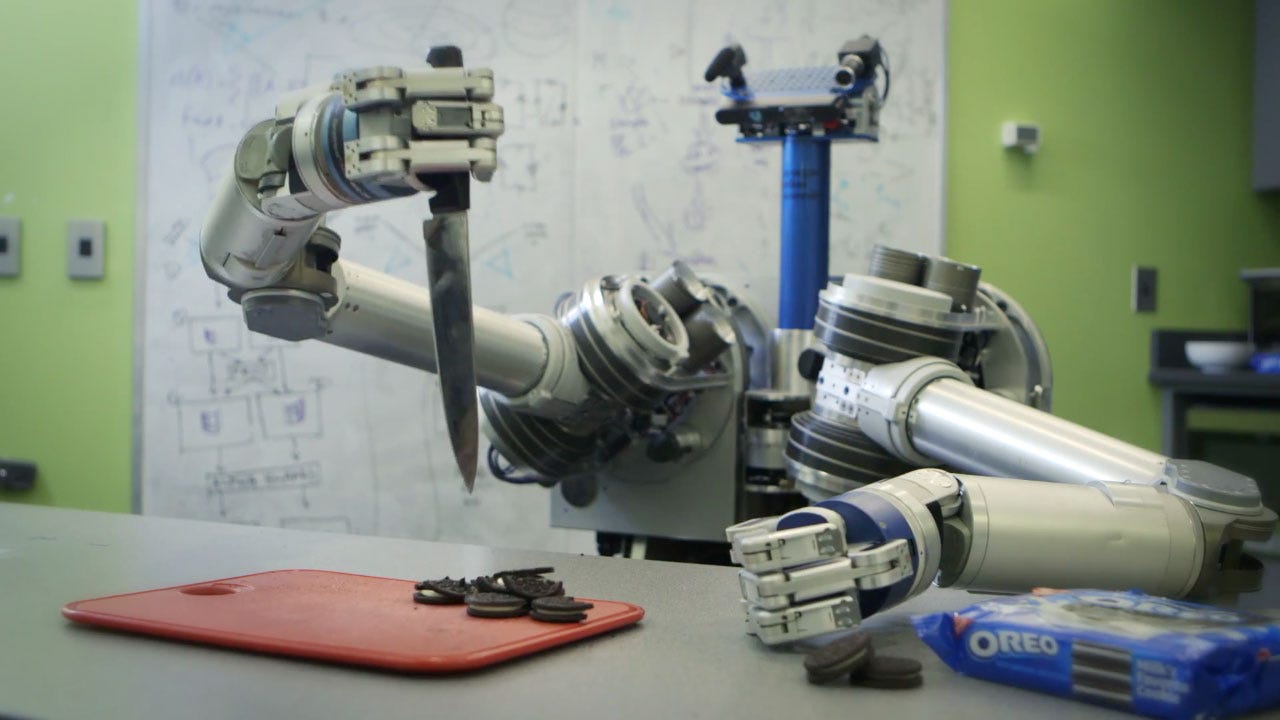Building a smarter robot with deep learning and new algorithms

One of the benefits of linking robotics with various aspects of IT such as the cloud and big data is that it can result in more functional robots that have access to more information and collaborative abilities than before.

The Robotics team at Carnegie Mellon trained one robot, named HERB, to pull apart an Oreo for humans. (Image: CNET)
That might seem like a frightening prospect, based on science fiction accounts of robots gone bad, but from a business and societal standpoint, it can lead to a number of benefits.
Efforts are underway to make robots smarter, including deep learning and new algorithms, which allow robots to learn things faster. By adding more intelligence, machines can move beyond the ability to perform repetitive tasks.
See also
"Deep learning and big data are fueling advances in perception and cognition of robots," said Abhinav Gupta, assistant professor at the Robotics Institute at Carnegie Mellon University (CMU).
"Perception -- vision, audio, and haptics -- helps robots to better understand the world around us," Gupta said. "It helps robots to know what are the objects in the environment and how can they be used. It helps understand the gestures, emotions of the humans in the environment with whom these robots have to interact."
But above all, deep learning approaches are being used to help robots make smarter decisions, in terms of actions they should do in any given environment, Gupta said. "Deep learning is being used to solve robot control and planning so that the robot can model uncertainty and rewards to take the right action," he added.
This opens up more areas where smarter robots can be used, Gupta said. For example, in manufacturing, robots can be used for visual inspection and planning ways to cut waste and promote efficiency in workflows.
Technologies such as artificial intelligence (AI) will help robots more effectively undertake everyday tasks -- but it could go well beyond that. "AI can help a vacuum robot to not get caught on that same piece of furniture every time or to turn off if it detects a liquid on the floor," said Patrick Moorhead, an analyst with Moor Insights and Strategy, a global technology analyst and advisory firm.
"In the future, we can expect that only through AI we will see more robots that do more than vacuum," Moorhead said. "They [will] fold our clothes, put the dishes in the dishwasher, and take the dog for a walk. None of this can be done without AI and is the prime reason you don't see many robots in the wild today."
Other than the manufacturing floor robots that use sensors, a rudimentary analytics system, and an 'if-then' approach, AI is required to do higher-order tasks, Moorhead said. Office environments could benefit from such increased capabilities. "Robots that deliver the mail, take out the trash, pick up spills could be of great use for any office space," he said.
Manufacturing can still benefit from smarter robots, as the time to setup, which is a current issue today, is much shorter. "Safety is improved too, as it's easier for smarter robots to work alongside humans, not cordoned off with metal barriers," Moorhead said.
As deep learning and other techniques are used to enhance robotics, the possibilities are seemingly endless.
"Smarter robots will be useful in any area where general purpose intelligence is useful," Gupta said. "From autonomous navigation [such as self-driving cars] to physically assistive systems in health care; from personal robotics in entertainment to medical robots; from managing trash to educational robots, I believe most of the industries are going to be affected by this new revolution," he said.